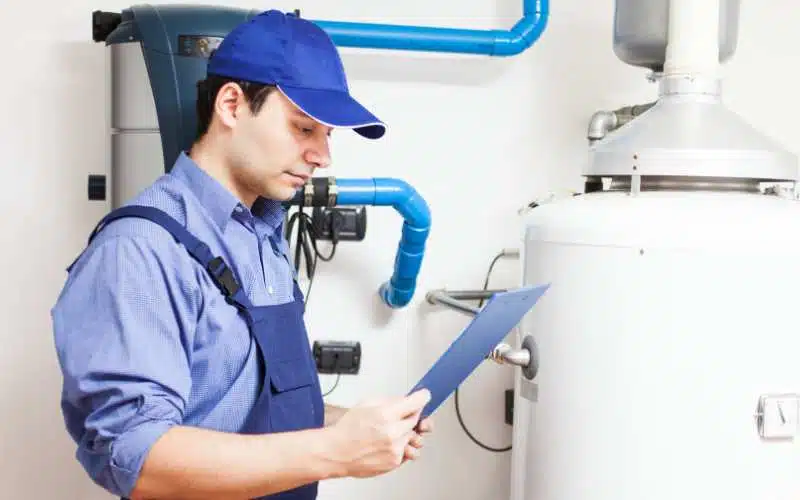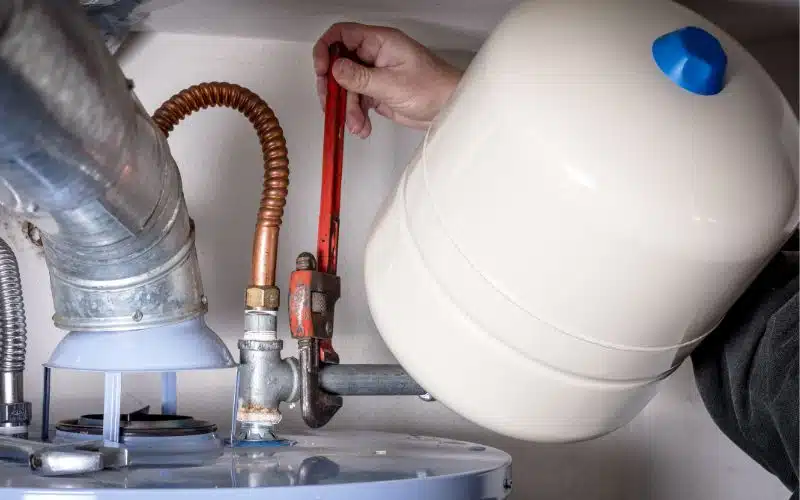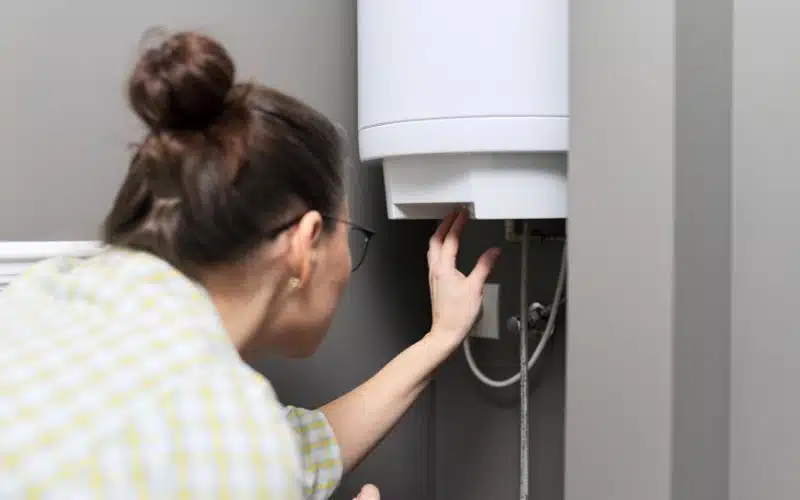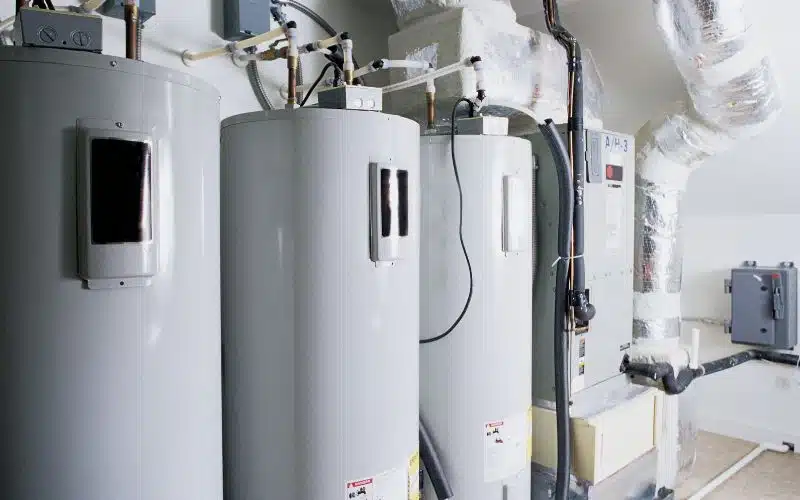Many individuals love having hot water in their faucets. And during cold periods, one needs warmth and hot water in their home to protect them from the harsh climate.
Hence, they use a boiler to transmit steam to keep their house heated.
However, at some point, the boiler could give out extremely or mildly hot steam and water, making it inconvenient for you, so you must control the temperature. But what controls a boiler’s temperature?
A boiler uses a thermostat to control the temperature of your room. This thermostat uses a sensor to notice your house’s climate and helps track the amount of heat dispersed. When the thermostat detects that the provided warmth is sufficient and convenient, the central heating system shuts down to restart when the warmth reduces.
Which Device Controls the Temperature of Water In a Boiler?

Thermostats regulate water temperature in boilers and maintain it at a specific level.
These thermostats come in different types and are suited for each boiler according to their operation mode.
Some of them include;
#1. Atmosphere Thermostats
As the name signifies, this atmosphere thermostat works to control your house’s temperature through the atmosphere.
It comes with a temperature sensor that scans the room’s condition. So, you only have to set the limit you want the room heated up to, and the thermostat changes to that.
Further, it uses this sensor to inform your boiler when to start dispersing heat or stop.
If this atmosphere thermostat notices a drop in warmth, it restarts the boiler immediately to give out heat, and if it reaches your set limit, the boiler turns off.
#2. Smart Programmable Thermostat
The smart programmable thermostat is a recent innovation in boilers and offers the same function but differently.
This smart feature allows you to choose the accurate temperature in your boiler and keeps your house warm without disruptions.
It is also programmable, so you can customize it to suit your weekly program regardless of where you are.
Additionally, you can connect this thermostat to your Wi-Fi and use it from your mobile phone or any device.
#3. Wired/ Wireless Programmable & Non-programmable Boiler Thermostats
The non-programmable wired boiler thermostat is the conventional one found in most homes. They’re linked through a wire and use a thermal detector to gauge warmth.
This thermostat type allows you to save since it costs less and uses a precise temperature continuously.
Next, the programmable wired thermostat allows you to control and program your boiler, meaning you can set your boiler to heat up at different periods.
For example, if you want your house heated at precisely 4 am and to stop at 9 am, you can achieve it using the programmable thermostat.
Further, you can program the temperature if you desire at least 60.8 F at night. This thermostat type works through infrared and is connected to the boiler via an internal receiver.
Also, the non-programmable wireless is simple to install, and you can choose a suitable location. But it can’t be programmed to suit your schedule, so the setpoint remains the same.
The programmable wireless thermostat is a stress-free thermostat as it doesn’t use cables, making it more convenient.
You can keep it in any position in the room you want to be heated since it works through radio waves and set it up as you desire.
What Are the Operating Controls On a Boiler?
The operating controls on a boiler are extensively defined to contain burner management controls.
These controls are the central power of a boiler; that is where you set your desired steam temperature and hotness degree.
The burner in boilers is responsible for supplying the needed heat to transform the boiler’s water into steam for warming a room.
You can liken a burner to an industrial blowtorch that provides hotness to boilers.
The table below mentions components of a burner management system and their function as operating controls on a boiler.
How Do You Control the Temperature of a Heating Element?
The only way to control the temperature of the heating element is through the heat control thermostat.
These heating elements are used to transfer heat, as their name indicates after the burner in your boiler has produced fire to heat water.
And they’re connected to the thermostat control, making it simple to use this device to regulate the element’s temperature.
The heating elements inside the boilers can not be handled directly but through this temperature control device.
These thermostats control switch on or off the heating system once it notices that the heat dispersed from the heating element through the burner has reached its set point.
And once the temperature drops, it switches it on again. These thermostats come in analog and digital forms.
The former comes in degrees allowing you to move the dial until you’ve reached your desired temperature setting.
On the other hand, the digital thermostat is a bit more complicated since it uses buttons.
You’ll have to use the buttons to reduce or increase the temperature setting until it’s as you want it.
Both thermostats use sensors to know when to communicate to a boiler to give out heat and when to stop.
Setting the temperature on your boiler’s thermostat allows you to control the beating elements and how they transform water into steam for instant warmth dispersion.
You can program the thermostat according to your schedule, and they’ll work effectively. However, your thermostat can only do so much.
Its primary role is controlling the temperature of heating elements and the boiler, but it can not prevent damage to heating elements.
A boiler’s heating element is a crucial component, but it is also fragile. So when next you set the heating limit on your thermostat and notice little to no heat in the air or water, your heating element is a likely suspect.
Where Is the Boiler Temperature Control Valve?
A boiler’s temperature control valve (TCV) is connected to the water inside the boiler drum. It controls and maintains the water’s temperature at the set level.
This valve is a well-known and crucial safety component and acts as a pressure & temperature reliever.
It opens up when the pressure and temperature of the water or steam exceed its set limit and alters it with a coolant.
Temperature control valves are also known as temperature regulators, as they work internally to ensure the steam to be released aligns with the set point on your thermostat.
Further, this device analyzes the indications it receives from the sensor with the set temperature point. It calculates them both to verify if they align.
If they don’t, the water temperature is too high, so the valve closes and cools them until they reach the set point.
How Do You Test a Boiler Control?
To test your boiler’s control or operating system:
- Disconnect power from the boiler’s controls and position a test lead along the controls’ terminals.
- Confirm the control setting and reconnect power to them before starting the boiler.
- Give the boiler some time to start up and wait for the steam pressure or your fluid’s temperature to correspond to the setting used in the high-limit control.
At this point, the controls should work and turn off the firing device. If the test works, disconnect power and take out the test leads you used. Reset the high-limit switch and resume the boiler’s usual operation.
This test is necessary as it’s a part of the boiler maintenance plan and helps to ensure the controls are in fine condition since they’re essential in the boiler’s safe operation and functioning.
Conclusion
Whether you use your boiler for steam or water heating, they’re controlled by a thermostat.
It works alongside other components to ensure accurate temperatures are used, so check them regularly, especially the safety valves, to ensure they work well.
And if you’d love to take a break from conventional thermostats, a smart thermostat is ideal as it offers excellent benefits.





